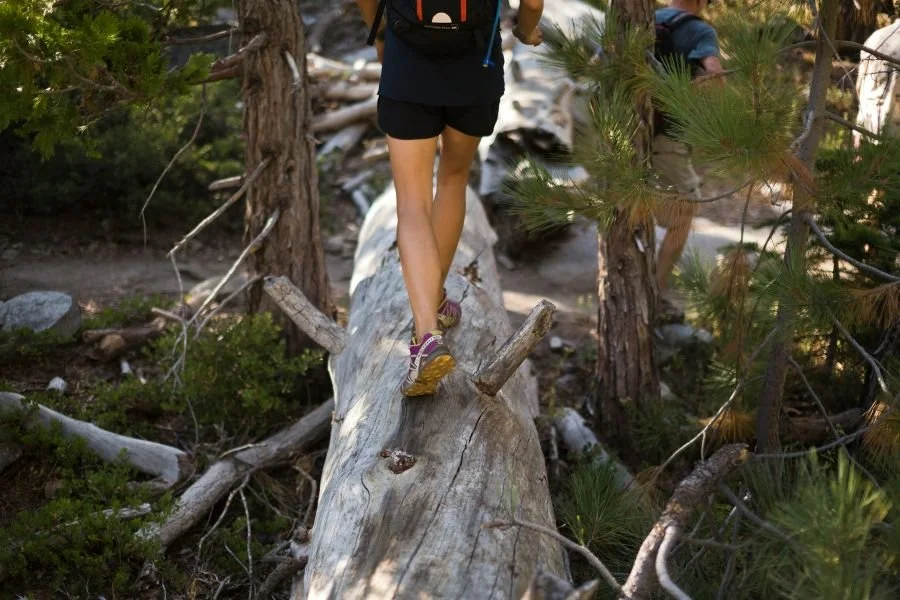Going for Trekking? 5 Travel-Friendly Climbing Gear Tips
/Ever packed for a trek and realized your gear feels heavier than the mountain itself? It’s the most unwanted situation for any trekker, right?
Well, for climbers and trekkers alike, deciding what to carry and how to carry it can make or break the trip. The challenge is simple: you need safety, reliability, and comfort, but you also want to stay as light and travel-friendly as possible. Airlines, long hikes, and unpredictable terrain all test your packing skills.
However, the good news is that with the right gear strategies, you don’t have to compromise. Here are practical tips that make climbing gear easy to travel with so you focus on the adventure, not the baggage.
CREDIT: ADAM BEZER on Unsplash
1. Prioritize Lightweight Essentials
When you're packing for a climbing trek, every gram matters. Start by choosing a gear that gives the most value for the weight.
For example, a climbing harness is non-negotiable for many routes and is one of the items you should aim to keep as light and adjustable as possible. The best part? These days, some harnesses, like those offered by Black Diamond Equipment, feature minimal padding and adjustable leg loops to reduce bulk. So, you should consider such options.
Along with that, there are some other essentials to look for (but trim where possible):
A lightweight helmet with good venting.
Minimalist belay device and locking carabiner.
Compact chalk bag (with an inside ziploc to keep chalk contained).
A single versatile pair of climbing shoes.
Fun tip: By sticking to pieces that punch above their weight, you reduce fatigue and increase flexibility on the go.
2. Smart Packing & Airline Logistical Tips
Getting gear through airports and over long journeys requires strategy especially with climbing equipment, which may raise eyebrows at security.
Here are some airline- and travel-savvy tips:
Carry your harness, helmet, and other safety gear in a carry-on if possible. That way, they're less likely to be lost or damaged.
Place bulky gear like ropes or crash pads in checked luggage or ship them ahead.
Bundle metallic items (cams, carabiners) together and wrap them to avoid them triggering security alarms separately.
Use soft gear bags that can compress under weight limits.
Check airline policies for “sporting equipment” allowances.
Climbing publications note that flying with gear such as pads and harnesses has caused extra baggage fees or scrutiny, depending on the airline and gear size. Knowing these packing rules in advance can save you hassle and unexpected fees at the airport.
3. Prioritize What You Can Rent or Buy Locally
Not everything needs to come with you. Depending on your destination, you may be able to rent or purchase certain gear locally, which cuts down on travel weight and risk.
Before you pack:
Research climbing guides or local shops at your destination to see what gear they rent (e.g., helmets, ropes, anchors).
Bring your core safety equipment (harness, shoes, personal gear) and plan to rent heavier/trad gear if available.
This approach gives you flexibility not being locked into carrying a full rack on your back across borders. It also reduces the chance of damage or loss of your own precious gear.
4. Pack for Versatility & Multipurpose Use
One of the smartest strategies is selecting gear items that serve multiple functions. This is especially helpful when traveling light.
Examples:
Use a climbing pack that doubles as your travel bag or daypack.
Choose shoes that can work for both scrambling and easy terrain.
Bring modular gear like a harness with detachable gear loops or convertible leg loops.
For protection, bring durable multi-use gloves or a buff that can serve as a face shield or headband.
Also, think about layering clothing that can perform in both climbing and trekking phases. Merino layers, stretchable pants, and compressive base layers reduce the number of clothing items you need.
5. Gear Maintenance & Safety Checks on the Go
When you're traveling and climbing in new places, your gear will see varied conditions dust, salt, humidity, and rough handling. Keeping gear safe and functional is key.
Rinse off salt, sand, or grit before packing (especially for harnesses, webbing, and carabiners).
Check stitching, buckles, and wear points daily.
Store soft gear items in dry bags or liners to protect from moisture.
Use a small repair kit: needle, thread, spare cord, carabiner, duct tape.
Before each climb, visually inspect your harness, carabiners, rope, and critical gear.
A little maintenance prevents failures on the wall and gear damage that ruins future trips.
Conclusion
Trekking with climbing ambitions requires balance: bringing what’s necessary without being weighed down. Prioritize lightweight essentials, negotiate airline challenges smartly, use local rentals when possible, and maintain your equipment on the journey.
However, your climbing essentials, though essential, shouldn’t break your back so pair them with smart gear decisions to elevate your adventure. Ultimately, pack thoughtfully, travel smartly, and let your journey become part of the climb.
Disclosure: This is a collaborative post.




























